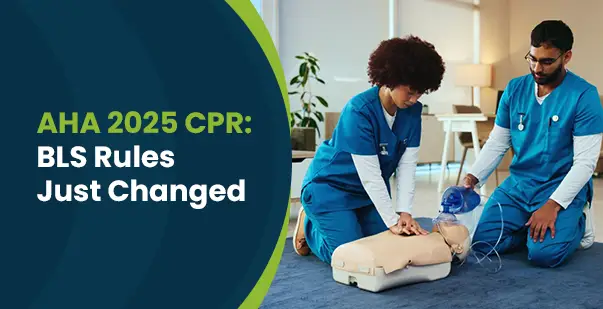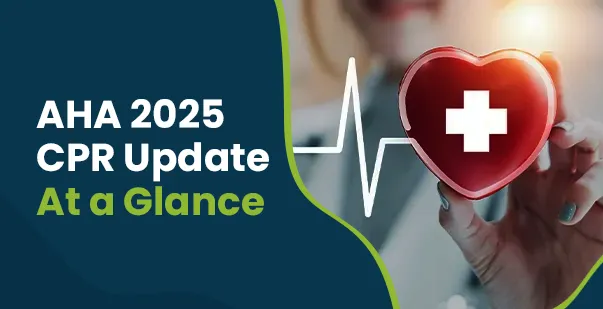CPR (Cardiopulmonary Resuscitation) combines chest compressions and artificial ventilation to restore blood circulation and oxygen supply to vital organs. Knowing the CPR success rate is important because it indicates how effective this vital intervention has been.
According to recent research, patients with cardiogenic issues had the highest CPR success rate. This emphasizes the significant contribution of CPR to increasing the heart attack survival rate.
However, the CPR success rate can vary based on factors such as the location of the event, response time, and availability of advanced life support. Examining the most recent statistics and developments will help us understand how to optimize the efficacy of this lifesaving treatment.
What is Cardiac Arrest, and How does CPR help in such a situation?
Cardiac arrest is a life-threatening condition that occurs when the heart suddenly stops pumping blood effectively throughout the body. Cardiopulmonary resuscitation, or CPR, is an essential emergency lifesaving method in such dire circumstances.
CPR is a technique for maintaining blood flow and oxygen supply to critical organs, particularly the brain, through artificial ventilation and chest compressions. Its main function is to temporarily restore breathing and some blood circulation until more advanced medical care is available.
Basic Procedure
Chest Compressions:
- Center the chest with the heel of one hand.
- Place the other hand on top of the first, interlocking the fingers.
- Administer 100–120 quick, sustained compressions per minute.
- Allow for recoil between compressions and compress the chest at least two inches deep.
Rescue Breaths (if trained):
- Give two rescue breaths after every thirty chest compressions.
- Tilt the head back, pinch the nose closed, and give two breaths lasting one second each.
Defibrillation (if an AED is available):
- Follow the AED’s audio/visual instructions for proper placement and delivery of a shock.
- Resume CPR immediately after the shock.
Prompt and efficient CPR that maintains blood and oxygen flow to important organs until advanced medical attention arrives can significantly increase the success rate of CPR. Learning and practicing proper CPR techniques is crucial for being prepared in emergencies.
Understanding CPR Success Rates
Evaluating the success rate of CPR is essential to determining the effectiveness of this life-saving method. However, the standards used to define a “successful” CPR effort might differ. Some common measures include:
Restoration of Spontaneous Circulation (ROSC)
This refers to the heart’s capacity to pump blood again when it resumes a steady, perfusing beat after cardiac arrest.
Hospital Admission
In certain instances, a successful CPR attempt is defined as the patient being admitted to the hospital following the initial resuscitation efforts.
Read More: What Does CPR Stand For And Why Is It Important?
Factors Affecting CPR Success Rates
While CPR is a crucial lifesaving technique, its success rate can vary depending on several key factors. Understanding these factors is essential for improving outcomes and increasing the chances of surviving a heart attack:
Location of the Event
In-hospital cardiac arrests tend to have a higher cardiac arrest survival rate compared to out-of-hospital incidents. Hospitals have modern life support techniques, trained staff, and equipment readily available. Victims of cardiac arrests in a hospital setting have a significant advantage, as expert personnel can begin treatment almost immediately.
Cause of Cardiac Arrest
The fundamental cause of cardiac arrest itself is a key factor affecting survival. CPR and defibrillation work better for certain causes than for others. More people survive shockable rhythms like ventricular tachycardia or ventricular fibrillation, while non-shockable rhythms such as asystole or pulseless electrical activity tend to have poorer outcomes from CPR alone.
Promptness of CPR Initiation
How soon CPR is started after cardiac arrest is critically important. The earlier chest compressions begin, the greater the chances of survival. Researchers estimate that survival chances drop by 5-10% for every minute that passes without CPR. Restoring blood supply to the brain and other vital organs is crucial.
Availability of Advanced Life Support
While high-quality CPR is the essential first step, advanced life support measures can greatly improve outcomes. Drugs, advanced airway techniques, and defibrillation shocks play key roles. Rapid deployment of advanced care, along with well-executed CPR, provides the best chance for successful resuscitation.
By understanding these elements, medical personnel and emergency responders can implement strategies to maximize CPR administration and increase the likelihood of survival in the event of a heart attack or cardiac arrest.
Advancements in CPR Techniques
Ensuring high-quality CPR is crucial for boosting the success rate of CPR. This involves following key guidelines:
Proper Hand Placement
To ensure that the heart is effectively compressed, the hand should be positioned in the center of the chest. The rescuer’s heel of one hand should touch the breastbone, with the other hand placed on top.
Adequate Depth
Compressing the chest to a depth of 2 to 2.4 inches (5 to 6 cm) is recommended. This depth ensures the heart is pressed hard enough to pump blood.
Appropriate Rate
Maintaining a compression rate between 100 and 120 per minute ensures optimal blood flow. Compressing too fast or too slow reduces effectiveness.
Reducing Interruptions
Chest compressions should not be interrupted frequently. Any pauses can decrease blood flow and oxygen delivery.
Compression-Only CPR
Compression-only CPR has become a widely available alternative for inexperienced bystanders. It involves continuous chest compressions without rescue breaths, making it easier to perform and reducing hesitation to begin CPR.
Use of Feedback Devices
Feedback devices, such as metronomes, real-time audiovisual cues, and compression quality feedback devices, assist rescuers in maintaining the correct compression rate and depth. Utilizing these tools can significantly improve the success rate of CPR.
Read More: High-quality CPR: Overview, Components, and Technology
Importance of Proper CPR Training
The success of this life-saving method depends critically on receiving appropriate CPR training. Completing training equips individuals with essential skills and offers several advantages that can significantly impact survival rates and overall outcomes.
Increased Survival Rates
Full training greatly raises the success rate for CPR for correctly performed CPR. Numerous studies demonstrate that bystander-administered CPR can triple the odds of survival for cardiac arrest patients. Regions and communities with higher rates of CPR training consistently show better outcomes in responding to cardiac emergencies. More trained individuals increase the likelihood of prompt action, maximizing CPR success rates.
Preventing Brain Damage
The brain is rapidly deprived of oxygen-rich blood supply as soon as the heart stops beating. Proper CPR helps maintain oxygen flow to the brain, reducing the risk of irreversible brain damage. This improves the overall success rate of CPR and recovery prospects for the victim. Maintaining blood and oxygen supply to the brain during those critical early minutes is essential.
Faster Recovery for Victims
In addition to protecting against brain injury, rapid and effective CPR reduces organ damage caused by inadequate blood flow when the heart stops beating. This increases CPR success, encourages quicker recovery, and improves long-term health for saved patients. Reducing pressure on vital organs enhances the quality of CPR.
Confidence in Emergency Situations
Gaining knowledge of the correct CPR method gives people the confidence and abilities needed to respond quickly in case of a medical emergency. Knowing that you have received training and can save a life in a cardiac emergency is incredibly empowering. This confidence enables more composed and effective responses.
Enhancing Safety at Home and Workplace
Having trained individuals on-site is key. They can start CPR quickly during cardiac events, greatly boosting survival rates and improving resuscitation outcomes.
Adherence to Updated Protocols
Participating in CPR training also guarantees that people learn and apply the latest standards and procedures. CPR protocols are periodically updated based on new scientific research to improve resuscitation practices. Regular CPR training ensures responders use the best techniques, increasing CPR success rates.
Psychological Benefits
Beyond the potential to save lives, CPR training can also benefit rescuers psychologically. It reduces bystander anxiety and hesitation during emergencies. Knowing you have the skills to make a real difference leads to greater psychological readiness and composure when cardiac events occur.
Conclusion
CPR remains a crucial life-saving technique that can significantly increase survival rates during cardiac emergencies. Understanding the current CPR success rates and the factors influencing its effectiveness is essential for healthcare professionals and the general public.
While advancements in techniques, training, and technology have improved outcomes, efforts to enhance CPR success rates must continue. Public awareness, readily available training programs, and ongoing research into resuscitation science are essential for maximizing the impact of this life-saving intervention.
People must voluntarily learn how to perform CPR and stay updated with the latest recommendations and best practices. Equipping more individuals with these skills will undoubtedly save many lives.









